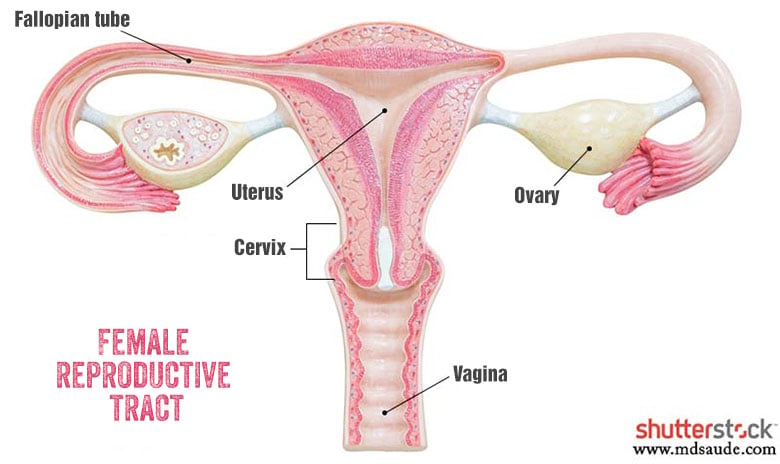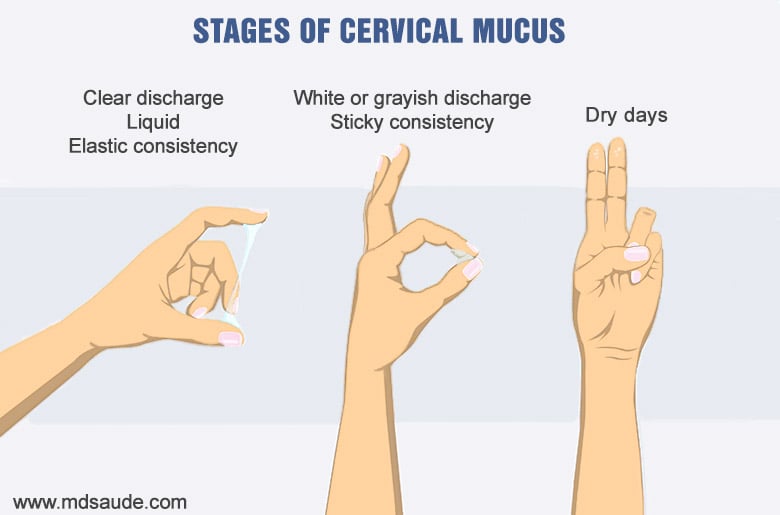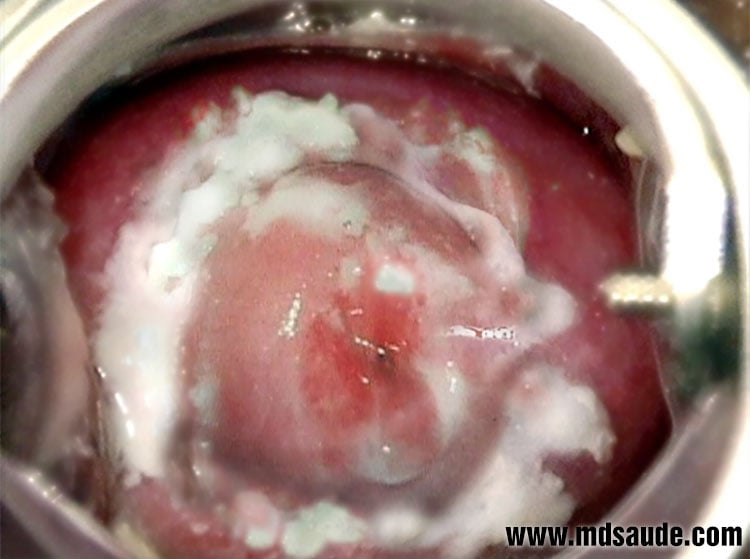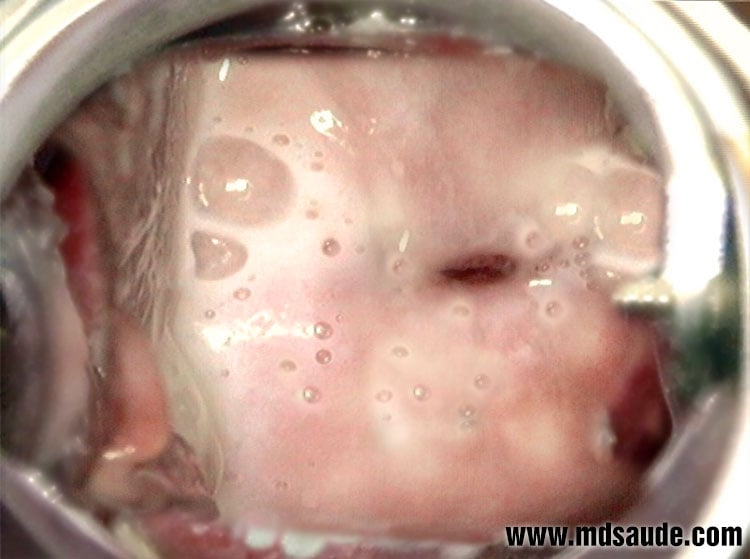What is vaginal discharge?
Vaginal discharge refers to the fluid secretions from the vagina, which can be entirely normal or indicate a gynecological issue, depending on their characteristics.
Natural vaginal secretions are produced by glands within the vaginal canal and play a crucial role in maintaining women’s health. They help to eliminate dead cells and bacteria from the reproductive system, keeping the vagina clean and preventing infections.
Generally, clear discharges without accompanying symptoms are benign and do not require treatment. On the other hand, if the discharge is greenish or yellowish, smells bad, and is accompanied by pain or itching, it is probably a sign of a gynecological infection.
In this article, we will explore the primary causes of vaginal discharge, detailing the signs and symptoms that may suggest vaginitis or colpitis (inflammation of the vagina).
Understanding Normal Vaginal Discharge
Before discussing physiological vaginal discharge, i.e., normal vaginal discharge unrelated to diseases, we need to take a moment to review the female gynecologic anatomy.
It is very common to confuse the vagina with the vulva. When we look at the female external genitalia, what we see is the vulva; from the vagina, we can only observe its external opening because the vagina itself is the channel that goes inside the body and ends at the cervix, as can be seen in the illustration below.
Normal discharge typically originates in the vagina and cervix, becoming noticeable only when it exits through the vagina’s external opening.
All women of reproductive age can experience normal vaginal discharge, called physiologic vaginal discharge. This discharge is made up of a combination of dead vaginal cells, natural bacteria from the vaginal flora, and mucus secretions. It usually has a daily volume of 1 to 4 ml. It serves to keep the vagina moist, lubricated, and clean, making it more difficult to become infected.
Physiological vaginal discharge is stimulated by estrogen and may increase in volume during periods of heightened hormonal stimulation, such as during pregnancy, use of estrogen-based contraceptives, mid-menstrual cycle, close to ovulation, or days before menstruation.
Normal vaginal discharge generally has the following characteristics:
- It can be thick, watery, or elastic.
- Its color is white, milky, or transparent.
- It has a very mild odor or no odor at all.
- It does not cause signs or symptoms of irritation, such as pain, burning, redness, or itching in the vagina or vulva.
This last characteristic is one of the most important clues for identifying physiological discharge. However, it is essential to note that mild vulvar irritation may occur in some women with physiological discharge.
Vaginal Discharge Variation Throughout the Menstrual Cycle
The characteristics of physiological vaginal discharge change throughout the menstrual cycle and can serve as a guide for women who want to identify their ovulation day.
This light discharge, originating in the cervix, is called cervical mucus. The consistency and appearance of cervical mucus throughout the menstrual cycle typically follow this pattern:
- During menstruation, the blood flow covers the mucus, making it imperceptible.
- Immediately after menstruation ends, women usually have 3 to 4 “dry days” without mucus or discharge.
- Following this short dry period, as the egg begins to mature, cervical mucus production starts. At this stage, the mucus is typically clear, slightly yellow, white, or cloudy, and has a sticky consistency.
- Just before and during ovulation, mucus volume increases, and vaginal discharge becomes more noticeable. The secretion is typically transparent, liquid, slippery, and elastic, resembling egg whites.
- Following ovulation, there is a significant decrease in mucus volume. At first, it takes on a cloudy and sticky texture once more before vanishing, leading the woman to have multiple dry days. This phase lasts approximately 11 to 14 days, until a new menstrual cycle begins.
Abnormal Vaginal Discharge
Leucorrhea, or pathological vaginal discharge, is the discharge that is associated with some gynecological disease. This type of discharge can have several causes. The most common is vaginitis, also called colpitis, which is an infection of the vagina, usually caused by bacteria or fungi.
Leucorrhea can also be caused by atrophy of the vaginal lining after menopause, allergy to certain substances such as spermicides, or the presence of a foreign body in the vagina.
We will briefly discuss the main causes of vaginitis and vaginal discharge. More details can be found in the specific texts for each condition described below.
Candidiasis
Candida is a fungus that is part of the natural vagina, skin, and intestines flora. Candida normally lives on our skin and usually causes no symptoms. However, whenever our body’s normal conditions are disrupted, such as overuse of antibiotics, stress, diseases like diabetes, immunosuppression, trauma, etc., Candida can begin to overgrow and cause symptoms.
Vaginal candidiasis typically manifests as itching or burning in the vulva, pain when urinating, pain during intercourse, and vaginal discharge.
Vaginal discharge caused by candidiasis usually has the following characteristics:
- Thick discharge.
- Does not have a strong odor.
- It may be abundant.
- Whitish, often compared to cottage cheese.
- Vaginal itching.
- Causes pain or burning, especially during sex or urination.
Gonorrhea and Chlamydia
Gonorrhea and chlamydia are two sexually transmitted infections (STIs) caused by the bacteria Neisseria gonorrhoeae and Chlamydia trachomatis, respectively.
Both of these infections cause cervicitis (infection of the cervix). They can be associated with vaginal discharge, usually of a mucopurulent (cloudy yellow) appearance. Other associated symptoms include pain when urinating, pain during intercourse, often with post-coital bleeding, and irritation of the vulva.
The main characteristics of vaginal discharge caused by gonorrhea or chlamydia are:
- The discharge may be greenish-yellow or even purulent.
- It is typically thick and pus-like.
- Although not all women notice a specific smell, it may have an unpleasant odor.
- The amount of discharge can vary and sometimes be quite profuse.
- Gonorrhea can also cause pain or burning when urinating, pelvic pain, and bleeding outside your period.
The discharge caused by chlamydia is usually similar to that of gonorrhea, but frequently milder.
Trichomoniasis
Trichomoniasis is a sexually transmitted disease caused by a protozoan called Trichomonas vaginalis.
Not all people with trichomoniasis experience symptoms. When symptoms do occur, it is usually vaginitis. It presents with a thin, greenish-yellow, foul-smelling discharge associated with the other classic signs of vulvovaginitis, such as pain when urinating, irritation of the vulva, and bleeding or pain during intercourse.
Trichomonas vaginalis can remain asymptomatic for a long time before causing vaginitis, making it difficult to know precisely when contamination has occurred.
Without treatment, the infection can persist for months or even years, becoming a risk factor for infertility and cervical cancer.
The main characteristics of vaginal discharge caused by trichomoniasis are:
- The discharge can vary in color from yellow, green, gray, or white.
- It typically has a thin, foamy consistency.
- It may have a strong, unpleasant odor, often described as “fishy.”
- The amount of discharge can vary, but is typically more than the normal vaginal discharge.
- Trichomoniasis can also cause itching, irritation, redness in the genital area, pain or burning when urinating, and pain during intercourse.
- Symptoms may worsen during menstruation.
Bacterial Vaginosis
Bacterial vaginosis is the most common cause of abnormal vaginal discharge. It is an infection caused by changes in the natural flora of the vagina resulting in a reduction in the number of lactobacilli (“good” bacteria) and an overgrowth of aerobic bacteria (“bad” bacteria) such as Gardnerella vaginalis, Mycoplasma hominis, Prevotella, Porphyromonas, Bacteroides, Peptostreptococcus, Fusobacterium, and Atopobium vaginae.
It is very common to associate bacterial vaginosis with Gardnerella vaginalis. Still, this disease is caused by the growth of multiple bacteria, not just Gardnerella.
The term vaginosis is used instead of vaginitis because there is little or no inflammation of the vagina, only bacterial growth.
The typical symptom of vaginosis is a thin, grayish vaginal discharge with a very strong, rotten, fishy odor. The other symptoms of vulvovaginal inflammation, such as pain when urinating, itching of the vulva, and pain during intercourse, are much less common and usually absent.
One of the diagnostic clues is the significant increase in the pH of the vagina due to the proliferation of bacteria and the decrease in the number of lactobacilli.
The main characteristics of vaginal discharge caused by bacterial vaginosis are:
- The discharge can be white, gray, or slightly yellowish.
- It typically has a thin, watery consistency.
- It may have a strong, unpleasant odor, often described as “rotting fish,” which may be more noticeable after intercourse.
- The amount of discharge may vary, but is often greater than the normal vaginal discharge.
- Bacterial vaginosis does not usually cause itching, pain, or redness in the genital area, although some women may experience mild irritation.
Vaginal atrophy
Vaginal atrophy typically occurs after menopause. Estrogen stimulates physiologic discharge, and the lack of estrogen causes dryness, thinning, and loss of elasticity of the vaginal lining. This vaginal atrophy can lead to inflammation with discharge, painful urination, and discomfort during intercourse.
Vaginal atrophy is part of the genitourinary syndrome of menopause, but it can also occur during breastfeeding or in women who have undergone treatments that reduce estrogen levels, such as certain surgeries or hormone therapies for cancer.
Some characteristics of vaginal discharge caused by vaginal atrophy are:
- The discharge may be clear, colorless, or slightly whitish.
- It typically has a thin, watery consistency.
- It usually does not have a strong or unpleasant odor.
- The amount of discharge can vary, but it is often less than the normal vaginal discharge because vaginal atrophy can also cause vaginal dryness.
- Symptoms of vaginal atrophy may include dryness, itching, irritation, pain or discomfort in the genital area, pain or burning when urinating, and pain during intercourse.
Allergies
Vaginal discharge caused by allergies to chemicals or substances can vary depending on the individual and the substance to which the person is allergic.
These allergies can be triggered by products such as soaps, wet wipes, lubricants, spermicides, condom latex, perfumes, pads, or tampons, among others. The allergic reaction in the vagina can cause vaginal discharge.
The main characteristics of vaginal discharge caused by allergies include:
- The discharge may be clear, colorless, or slightly whitish.
- It typically has a watery or mucous consistency.
- It usually does not have a strong or unpleasant odor.
- The amount of discharge may vary, but is usually less than the normal vaginal discharge.
- Allergies can cause symptoms such as itching, redness, swelling, irritation, and pain in the genital area. These symptoms may be most intense soon after exposure to the allergen.
Less common causes
The causes listed above are the most common, but they are not the only ones. If a woman has persistent vaginal discharge that does not appear to be physiologic and none of the common causes are identified, the gynecologist must also consider the following hypotheses:
- HPV infection.
- Genital herpes.
- Cervical cancer.
- Allergy to semen (rare cause).
- Vulvovaginitis caused by Streptococcus bacteria.
- A foreign object lodged in the vagina (e.g., an absorbent pad or a “lost” condom).
- Pinworm infection.
- Pelvic inflammatory disease.
Vaginal discharge according to its color
Brown vaginal discharge
Any situation that causes some amount of vaginal or uterine bleeding can cause a brownish discharge. The main causes are:
- Remnants of menstruation mixed with physiologic discharge.
- Vaginal or uterine trauma.
- Infections
- Foreign bodies in the vagina.
- Gynecological tumors.
- Uterine bleeding caused by implantation of the embryo in the uterus during the first days of pregnancy.
- Vaginal atrophy.
- Ectopic pregnancy.
Yellowish or greenish vaginal discharge.
Yellowish-greenish vaginal discharge usually indicates gynecological infection, especially if accompanied by vaginal odor, burning, or itching. The main causes are:
- Trichomoniasis.
- Gonorrhea.
- Chlamydia.
The physiological discharge is typically white and clear. Still, it can turn a little yellowish when exposed to the air after contact with the panties. Therefore, if the woman has no symptoms and the discharge has no odor, the fact that it is yellowish does not necessarily indicate an ongoing infection. When in doubt, it is best to see your gynecologist so that she can evaluate the discharge.
White or grayish discharge
White or grayish discharge is usually normal, especially if it is thin, in small amounts, and occurs close to the ovulation period. However, an infection should be investigated if the discharge is thick, pasty, milky or cloudy, especially if it is accompanied by irritating symptoms such as itching, vaginal pain, or a bad odor. The main causes are:
- Candidiasis.
- Bacterial vaginosis.
Foul-smelling discharge
A foul-smelling discharge is typical of a gynecological infection. The main causes are:
- Bacterial vaginosis (very strong odor).
- Trichomoniasis.
Diagnosis
In order to correctly differentiate between the types of vaginal discharge, a consultation with your gynecologist is necessary.
A gynecological examination can determine whether vaginitis, cervicitis, or simply a discharge without signs of inflammation is present. It is also possible to take samples of the discharge for vaginal pH testing, microscopic examination, and culture.
Treatment
Treatment of vaginal discharge depends on the cause. It ranges from antifungals or antibiotics for infections to estrogen creams for atrophic vaginitis. There is no single treatment that works for all types of discharge.
If you have vaginal discharge, see your gynecologist so that the cause can be determined and appropriate treatment can be started.
References
- Frequently asked questions. Women’s health: Vulvovaginal health – American College of Obstetricians and Gynecologists.
- Vaginal discharge – Textbook of Family Medicine – 9th ed. 2016.
- Vaginal discharge – Mayo Clinic.
- Vaginal Discharge – Palo Alto Medical Foundation (PAMF).
- Evaluation of vaginal complaints – JAMA.
- Approach to women with symptoms of vaginitis – UpToDate.
Author(s)
Pedro Pinheiro holds a medical degree from the Federal University of Rio de Janeiro (UFRJ) and is a specialist in Internal Medicine and Nephrology, certified by the State University of Rio de Janeiro (UERJ) and the Brazilian Society of Nephrology (SBN). He is currently based in Lisbon, Portugal, with his credentials recognized by the University of Porto and the Portuguese Nephrology Specialty College.








Leave a Comment